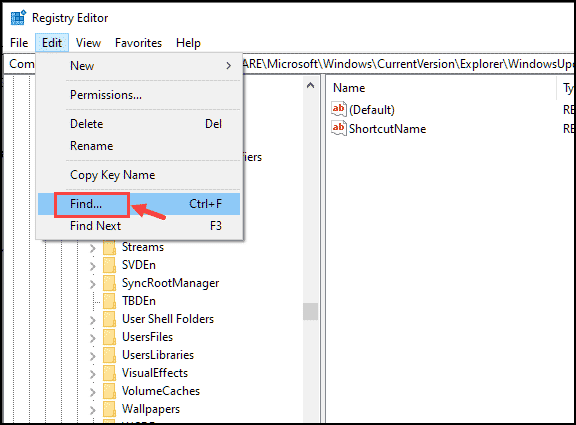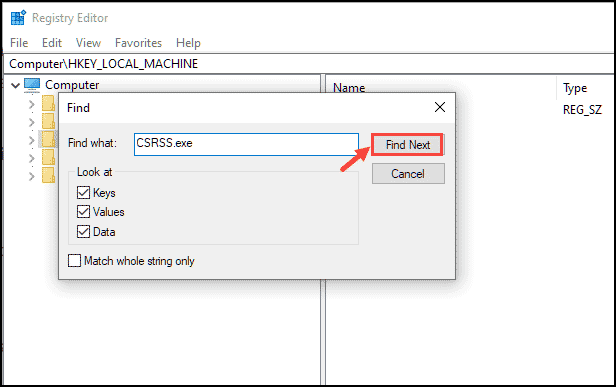
CSRSS.exe Threat Analysis: Identifying Trojans Vs. Viruses & Comprehensive Removal Guide

CSRSS.exe Threat Analysis: Identifying Trojans Vs. Viruses & Comprehensive Removal Guide
CSRSS.exe is the executable file of the legitimate Windows OS process, known as Client Server Runtime Subsystem (CSRSS). This is an essential process that handles the majority of the graphical instruction sets of the Windows operating system. However, since it is a common and critical system process, many cyber attackers take advantage of it and release the malicious Trojan program sneaking in the CSRSS.exe name.

Stay malware-free with reliable antivirus
Don’t compromise your Data and Privacy. TotalAV is a top-notch antivirus program that handles various viruses, trojans, and other malware that may target your devices. It will safeguard your devices and enhance your system performance.
4.9/5
⭐ Editor’s Choice
✔️ Excellent Malware Detection
✔️ Multiple set of Features
✔️ 30 Day Money-Back
Find and Remove Hidden Malware Viruses on your PC
In this post, we would learn how to spot the fake Client Server Runtime Subsystem process and remove the CSRSS.exe trojan.
Disclaimer: This post includes affiliate links
If you click on a link and make a purchase, I may receive a commission at no extra cost to you.
What are the symptoms of the CSRSS.exe attack?
The fake CSRSS.exe might be hiding anywhere in the system and sneakingly spying on users or conducting other illicit activities. Since it disguises itself in the name of a legitimate and safe process, it is pretty challenging to detect the CSRSS.exe trojan. However, the system shows some common symptoms that might confirm the presence of Trojan malware. Here is the list of those indications:
- CPU usage suddenly rises than usual.
- The system lags frequently.
- Your browser is bombarded with malicious pop-ups.
- A random window is opened without the user’s initiation.
- Redirection to untrustworthy or suspicious sites.
How to Remove Malware and Cleanup Windows PC
How does CSRR.exe enter my system?
There are various mediums the fake CSRR.exe might have entered your system. Here are some top ways:
- You might have downloaded the software that contains the virus and get an entry on your device after you install that software. It also comes with the bundled software.
- Cybercriminals might have sent an infected email , which you might have opened, and the virus gets installed silently on your computer.
- You might have seen an intriguing pop-up ad on a website and clicked it, making way for the IDP.Generic Virus on your device.
- Once a trojan program gets an entry, it initiates the chain reaction and automatically installs other malicious programs.
- Peer-to-peer networks, such as torrents, are also one of the primary carriers of such viruses.
How do CSRSS.exe works?
The CSRSS.exe works similarly to any other Trojan program. It pretends to be a legitimate program, hides itself in the system, and conducts various malicious activities like stealing user’s bank information, passwords, spying on their mails, and more. The CSRSS.exe trojan might often install itself by copying its executable to the Windows or Windows system folders and then modifying the registry to run this file at each system start. CSRSS.exe will often alter the following subkey in order to accomplish this:
HKEY_LOCAL_MACHINE\Software\Microsoft\Windows\CurrentVersion\Run
How to verify the presence of a fake CSRSS.exe File?
If you have spotted a CSRSS.exe file, there are two simple and straight ways to confirm whether it is legit or fake. The first is the location of the file. The original, legitimate CSRSS.exe executable file is located in the C:\Windows\System32 folder. Any file named CSRSS.exe, which is located in any other folder than this, is undoubtedly a malware or fake file.
The second way is through Task Manager. Follow these steps:
- Launch Task Manager.
- Under the Process tab, look for CSRSS.exe or Client Server Runtime Subsystem process.
- Right-click on the file and click on Delete.
- If Windows prompts you with a warning box, then it is a legit CSRSS.exe process. If Windows does not show any warning box, then the CSRSS.exe process is fake.
How to remove CSRSS.exe Trojan from the system?
After spotting the CSRSS.exe, you can delete it; however, this won’t completely remove it from the system as it might have infected registries and more files of the system. There are several methods to remove it from the device entirely.
Note: Delete the CSRSS.exe only if you are sure that it is malicious. Deleting the original CSRSS.exe could create complications in the system and result in BSOD.
Remove CSRSS.exe through Registry Editor
Sine CSRSS.exe Trojan modifies the registry to install itself; you have to remove it from the Registry through Regedit. Here are the steps for that:
Launch Run command box and type regedit to open Registry Editor.

Before modifying or deleting anything, it is sensible to back up the registries. Click on File and select Export, and save the registries on any safe place on the hard drive or external drive.

After creating a backup, click on Edit and select Find.

Type CSRSS.exe and click Find Next.

The search for the registry will begin.

After the registry is found, right-click on it, and select Delete.
Restart your PC in Safe Mode
Windows Safe Mode is the perfect environment to find out and solve the critical errors in the system. In safe mode, only system programs and some crucial programs run. Safe mode would most likely kill the applications and its files that try to run automatically on your system. Follow this guide to boot your Windows 10 PC in the Safe Mode.
Uninstall Suspicious Applications
If CSRSS.exe virus is still there on your PC, try to find the culprit application and uninstall it.
- Right-click on the taskbar and select the Task Manager.

- Watch out for the applications that are consuming the system memory even though you did not install or launch them.
- Right-click on the suspicious application and open its file location.

- Delete the file from its root location.
- Open Control Panel and click on Uninstall a program and check for suspicious apps. One by one, select and uninstall them.

Delete Temporary Files
The temporary files folder can also be a carrier of malicious files. Thus, we recommend deleting all the temporary files and folders regularly for the smooth running of the system. Removing the temporary files would also clear the unnecessary clutter from your system and free-up the valuable space.
Here are the steps to eliminate thre temporary files:
Open the Run command window.
Type %temp% and hit the enter key.

This run command would navigate you to this path: C:\Users\[username]\AppData\Local\Temp, that is, the temp folder.
Select all Files and Folders of this folder and delete them. Don’t hesitate to delete them, as they are not essential for any of your tasks.

Next right-click on the Recycle Bin and select Empty Recycle Bin.

Reset Web Browser Settings
If your browser is misbehaving because of CSRSS.exe, then reset its settings to default.
- Open Chrome and navigate to Settings by clicking on the three-dots at the top right.

- Click on advanced Advanced.

- Under Reset and cleanup, click on “Restore settings to their original defaults.”

- Select Reset settings on the next prompt.

- Relaunch your browser.
Install an Antimalware and Perform a Scan
Manually removing malware can be a tedious task, and it takes a lot of time and effort on our part. Sometimes, it may get irritated for you if you are not much into the technology. There is no need to worry; you can get a robust antimalware like MalwareFox that will scan for malware and remove it.
MalwareFox is a reliable security software that promises to protect your system and helps to handle malware and viruses. MalwareFox will scans, detect, and remove Malware and offers real-time protection. It also protects your PC from most dangerous malware such as Ransomware, Zero-Day Attack protection, Grayware, Keyloggers, etc.
- Download Malwarefox and install it .
- Perform a full system scan to get rid of every malware that is troubling your system.

Takeaways to Avoid Such Threats in The Future
In the modern world, as things are getting more and more online, you have to be always mindful to protect your system from malware programs like CSRSS.exe Trojan.
Here are some tips for maintaining your system:
- Keep installed an allrounder antimalware program and regularly update it.
- Do not go for the suspicious freeware downloads. Freeware programs are one of the primary malware carriers.
- Always stick yourself to secure websites because malware usually chooses unprotected sites to initiate the attack.
- Try to avoid opening an email attachment from an unknown source.
- Do not fall in the trap of the intriguing banner ads and pop-ups. Just clicking on them can infect your browser with a browser virus .
Leave a Comment Cancel reply
Comment
Name Email
Save my name, email, and website in this browser for the next time I comment.
Δ
Also read:
- [New] Top 6 iPhone Tools for Erasing Unwanted Items in Images
- App Wont Open on Your Samsung Galaxy S24+? Here Are All Fixes | Dr.fone
- Cloud Storage Showdown: Analyzing Top Platforms and Their Offerings
- How Have ChatGPT Jailbreaks Faded? Investigating the Top Eight Factors
- Mastering the Connection: Integrating Your Firestick With A Projector Device
- Navigating New Features in Monterey Release
- PLN Dateien Nicht Verloren Gehen Lassen! Entdecken Sie Die Wiederherstellungsmethoden Von MyRecover
- Resurrect Your Files: Essential Techniques for Data Retrieval After Removing a Disk Segment
- Step-by-Step Guide: Converting AIFC Audio Files Into WAV Format Across Windows, Mac OS & Online Tools
- The Endurance Battle: Can EVs Compete with Gas Cars for a Longer Drive Timeframe?
- Top Rated No-Cost Alternatives for Saving Your Emails From Gmail, Outlook & Yahoo
- Ultimate Troubleshooting Tactics for Severe Operating System Structural Issues on Computers
- Update Your Brother Scanner Drivers Now – Compatible with Windows OS
- USBメモリ上でWindows Recovery Partitionを移動・バックアップする方法 (Win11/10/8/7)
- Title: CSRSS.exe Threat Analysis: Identifying Trojans Vs. Viruses & Comprehensive Removal Guide
- Author: Richard
- Created at : 2025-01-22 19:23:09
- Updated at : 2025-01-23 23:39:15
- Link: https://win-reviews.techidaily.com/csrssexe-threat-analysis-identifying-trojans-vs-viruses-and-comprehensive-removal-guide/
- License: This work is licensed under CC BY-NC-SA 4.0.















